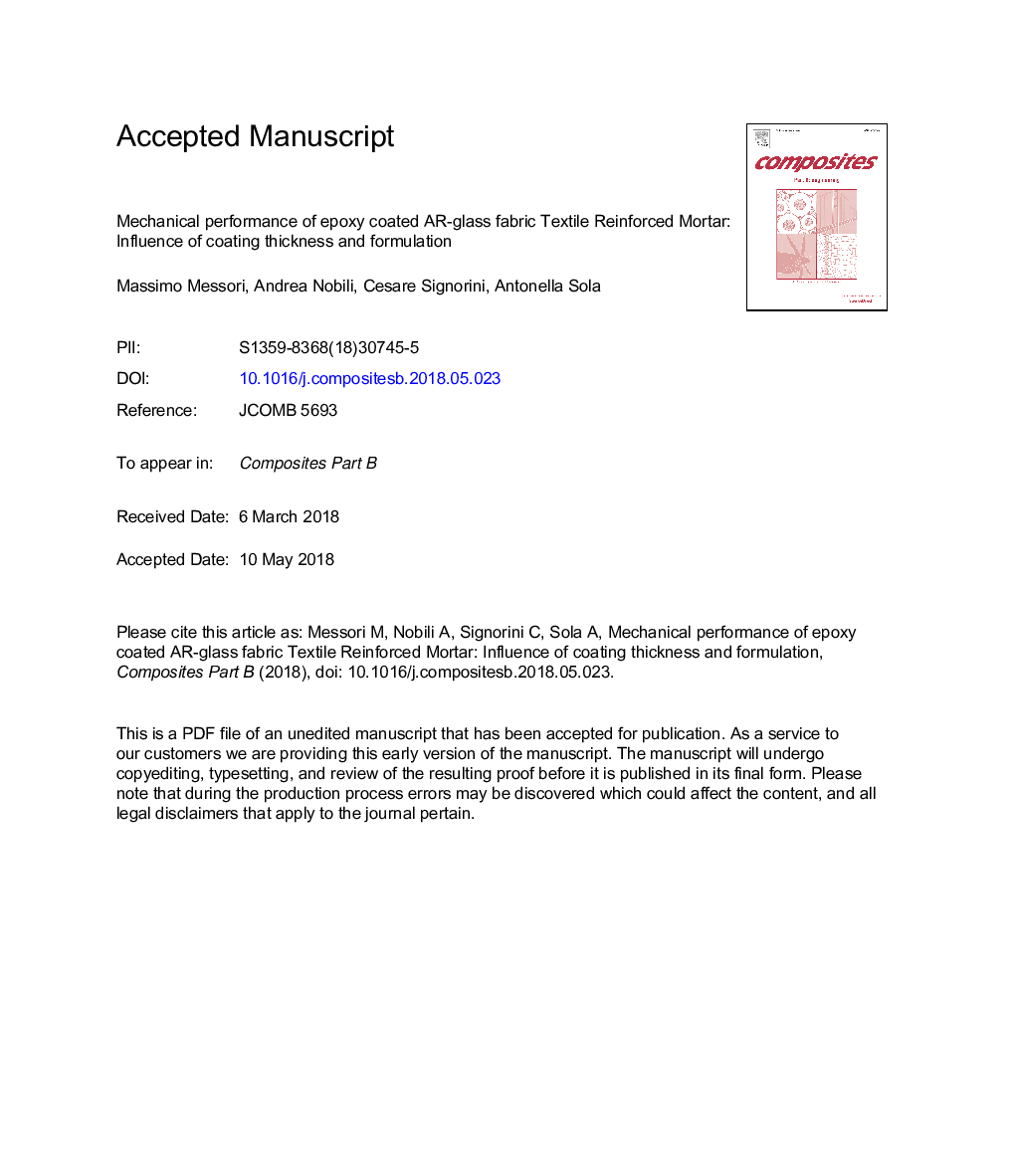| Article ID | Journal | Published Year | Pages | File Type |
|---|---|---|---|---|
| 7211881 | Composites Part B: Engineering | 2018 | 23 Pages |
Abstract
The mechanical performance of epoxy coated AR-glass fabric reinforced composite is investigated. A three-stage manufacturing process is considered, which involves fabric surface functionalization, liquid coating deposition and long-term setting and finally fabric embedment in the mortar matrix. Two epoxy coatings are considered, which only differ by the hardening agent. However, coating thickness is significantly diverse as a result of modified viscosity during liquid deposition. Performance is assessed in uni-axial tension as well as in three-point bending and it is expressed in terms of strength curves, data dispersion, crack pattern and failure mechanism. Remarkably, despite being very similar, the analyzed coatings produce a significantly different performance, especially when data dispersion is incorporated and design limits are considered. Indeed, although both coatings are able to consistently deliver fabric rupture at failure, only the thinnest is associated with small data scattering and an almost plastic post-peak behavior in bending. The associated design elongation limit reaches the maximum allowed value according to the ICC guidelines. In fact, it appears that coating thickness plays a crucial role in determining mechanical performance and fabric flexibility. The proposed manufacturing process proves extremely effective at enhancing matrix-to-fabric adhesion and thereby prevent telescopic failure.
Related Topics
Physical Sciences and Engineering
Engineering
Engineering (General)
Authors
Massimo Messori, Andrea Nobili, Cesare Signorini, Antonella Sola,
